Analysis
Art Basel Cities Is the Global Fair Company’s Portal to the Future. But What the Heck Is It, Anyway?
A pricey experiment by an international art-fair organizer descends on a country in crisis. Guess what? This is an upbeat story.
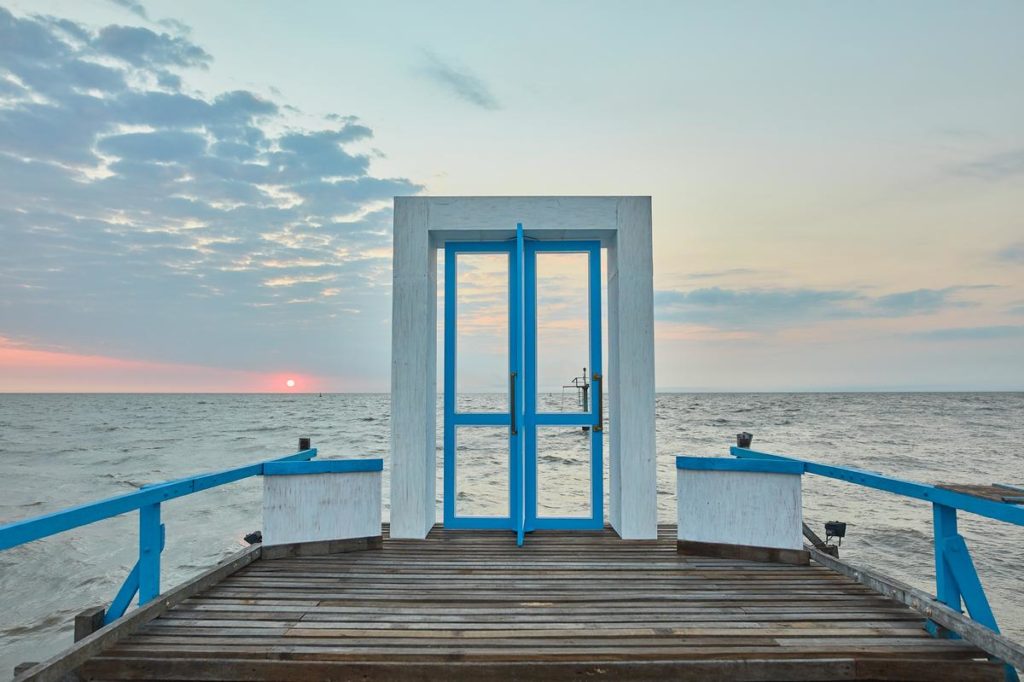
A pricey experiment by an international art-fair organizer descends on a country in crisis. Guess what? This is an upbeat story.

Andrew Goldstein

The optics are not great: A week after Art Basel Cities produced its inaugural event in Buenos Aires, staging eye-grabbing works of public art and star-studded programming across the city, members of Argentina’s government declared the country to be in “a state of ‘cultural emergency’” amid a wholesale currency collapse.
On one side of the cognitive split screen, the Swiss company known for staging elite art fairs around the globe was entertaining art-world dignitaries with champagne soirées, part of a three-year experimental cultural-development program carrying a $3.3 million price tag. On the other side, the Argentine culture ministry is being cut down and merged with the Ministry of Education and a new program of austerity means that national museums will no longer be free to its citizens. One local publication quoted a collector skeptical of Art Basel who said he believed the city had “bought smoke.”
Taken together, this is a tale about what happens when good intentions, a global art-luxury market lofted ever higher by an ascendant über-class, and the realities of the turbulent global economy below collide.
Surprise: this is actually an upbeat story.
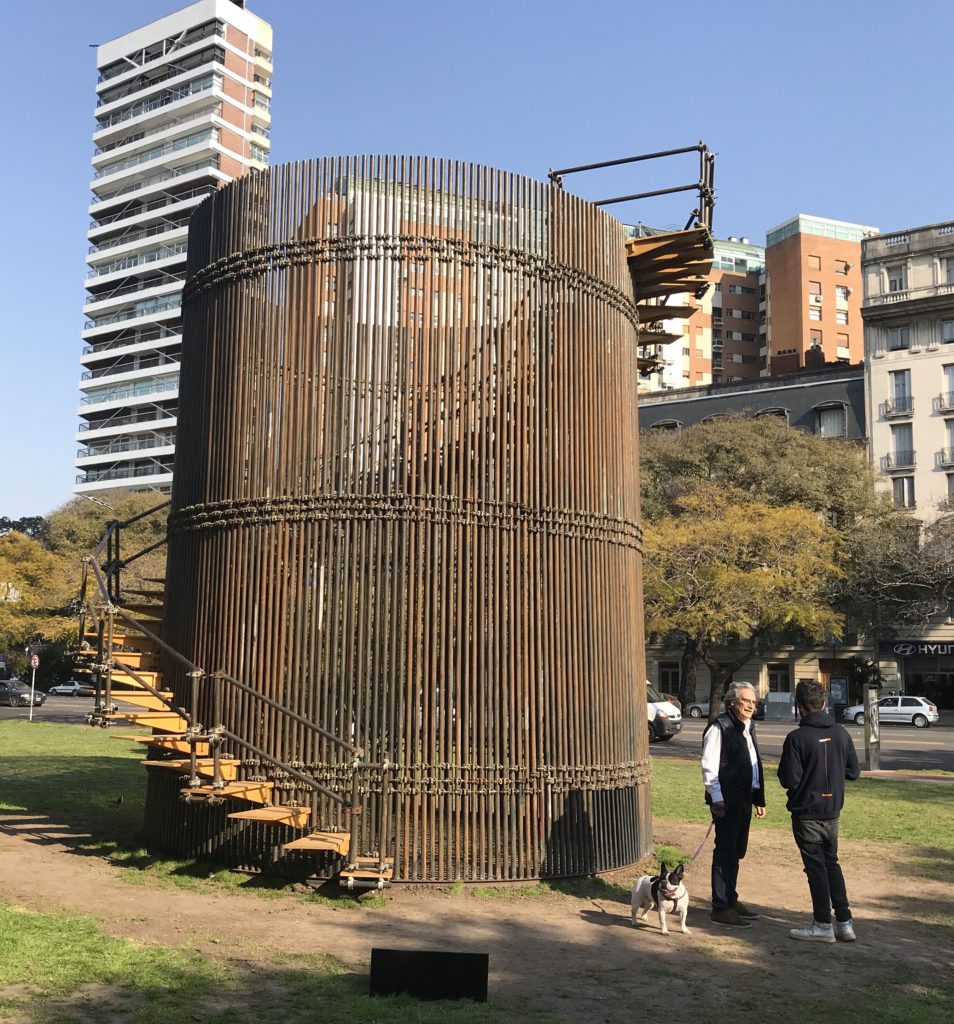
A Porteño inquires with an Art Basel Cities guide about Luciana Lamothe’s Starting Zone. Photo by Andrew Goldstein
The first thing to understand about Art Basel Cities, according to Patrick Foret, the Art Basel director of business initiatives who dreamed up the new initiative, is that it is an “experiment.” As the company has expanded from a forum for buying and selling blue-chip art to an international brand, it has also become an object of desire for cities chasing tourism and development revenue. (The mayor of Miami Beach says that the fair generates about half a billion dollars for the South Florida region annually.) But the company has no appetite to launch new fairs at a time when galleries and collectors are struggling to keep pace with the existing glut. “We would start to cannibalize ourselves,” Foret explains.
As a result, Art Basel faced a conundrum: it had simultaneously reached a ceiling for growth of its fair-driven business model and found itself turning down opportunities to expand to the dozens of cities that had pursued partnerships. This impasse forced the company to undergo a period of soul-searching, which yielded a eureka moment: No longer just an art fair company, “we defined Art Basel as ‘an exchange platform that drives the art world forward,’” says Foret, with a mission to “create business opportunities, cultural-exchange opportunities, and intellectual-exchange opportunities… to support transactions in the arts, from our collectors supporting artists to our corporate partners supporting the arts.”
Since such transactions are dependent upon a lively, growing ecosystem of art production and consumption, partnering with cities to spur cultural development suddenly made sense. But how could Art Basel unhook the hose of global luxury capital—and concomitant media attention—from its marquee commercial event and instead connect it directly to a local cultural matrix? And what would be the minimum viable product to accomplish this end, allowing for maximum revenue to be channeled to the city’s artists without creating a high-cost temporary event like a biennial?
Nestled on an estuary far down in the Southern Hemisphere, Buenos Aires is a sprawling and cosmopolitan metropolis that at the same time feels like a frontier town—its wide boulevards echo the grand cities of Europe, but its distance from rest of the world hangs palpably in the air. Long on the vanguard of the the arts in the region, its lively cultural scene has been shaped by this seeming contradiction, generating celebrated works of art, literature, and cinema that tie into the international discourse while simultaneously standing defiantly apart. It can be suspicious of outsiders: when the British film director Alan Parker came to town in 1996 to shoot the musical Evita, massive protests over the choice of Madonna to play the dictator’s wife—who remains a sainted figure for her ostensible devotion to the poor—eventually forced the production to move to Budapest.
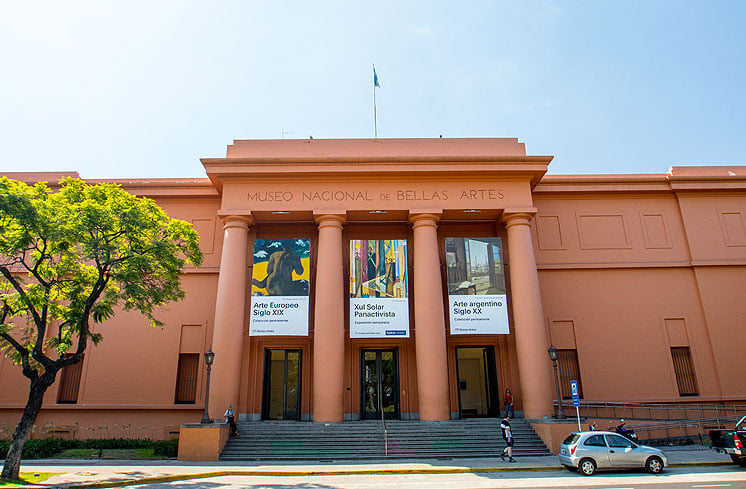
The Mueso Nacional Bellas Artes in Buenos Aires is run by Argentina’s Ministry of Culture, which is being shut down. Photo courtesy of Buenos Aires Tourism.
Art Basel, however, was greeted with open arms. Discussions began two-and-a-half years ago, when the Hungarian-born curator and Art Basel consultant András Szántó and Iciar Mangas, the fair’s VIP representative for Latin America, attended the local arteBA fair and fell into conversation with Alec Oxenford, an affable, energetic chairman of arteBA and technology entrepreneur who Foret describes as “the South American Bill Gates.”
Keen on the impact that a partnership with Art Basel could have on Buenos Aires, Oxenford introduced the team to the city’s mayor. As Foret remembers it, mayor Horacio Rodríguez Larreta said, “If through the Art Basel Cities exercise we manage to get our art scene to start working together, and catalyze the art scene behind a common goal, this would be an incredible achievement.”
What followed was a period of due diligence and negotiation. Art Basel undertook a five-month immersion in the Buenos Aires art scene, conducting more than 100 interviews with local gallerists, artists, collectors, museum directors, and other stakeholders. They concluded that in Buenos Aires “there’s a lot of pride in their arts and culture, but there’s at the same time a lack of confidence in their ability to engage with the world,” Foret explains. With its expertise in development and its international networks, Art Basel could “come in and tell them, ‘You can do it.’”
Victoria Noorthoorn, the director of the Museo de Arte Moderno de Buenos Aires, was initially skeptical about the project. She felt locals were “sort of forced to welcome a kind of extraterrestrial engineering machine that will impose on our artistic scene strategies, artists, and exhibitions that are not part of the cultural scenario in Buenos Aires.”
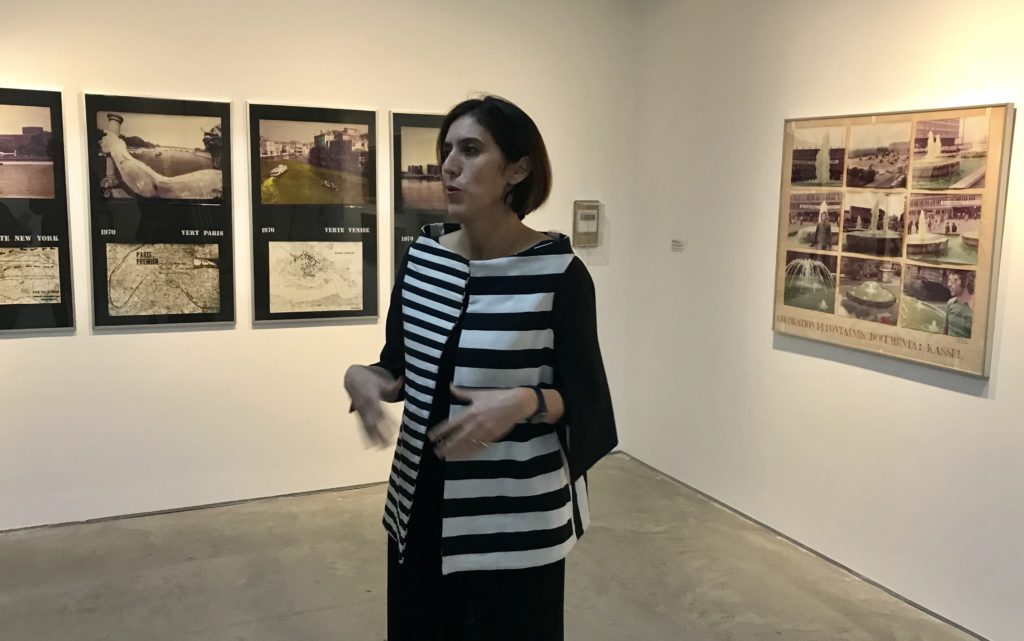
Victoria Noorthoorn, the director of the Museo de Arte Moderno de Buenos Aires. Photo by Andrew Goldstein.
She also disagreed with Art Basel’s initial assessment of the city’s needs. “I wouldn’t say that there is that crisis of confidence in Argentine artists at all,” she says. In addition to a lack of local philanthropy, “the problem is that the market is still very depressed—the prices for art are very low.”
Art Basel managed to overcome Noorthoom’s doubts by creating a program with refined sensitivity to the city. “I have to say, I think this was very intelligently managed by Art Basel,” she says.
Taking place over three years, the initiative commenced with a series of art talks and symposia in November 2017 that would take place at a special Art Basel Cities House in Buenos Aires and include a “cultural immersion” program for visiting collectors and art professionals. Then, in September 2018, an Art Basel Cities Week followed with a small-scale exhibition of public art featuring work by mostly Argentine artists, a series of “master classes” featuring real-world advice from such luminaries as San Francisco Chronicle art critic Charles Desmarais and Kickstarter arts director Patton Hindle, and several tony events to coincide with Buenos Aires Gallery Weekend. Thereafter, there will be a gallery internship program and more events in 2019.
The total bill for the Art Basel Cities program comes in at around 130 million Argentine pesos, or about $3.3 million (at today’s valuation), according to a representative from the Buenos Aires mayor’s office. Part of the money goes toward the fabrication of 15 new artworks for the exhibition, curated by High Line arts director Cecilia Alemani, with the artists receiving the funds directly. Another part would cover “the conceptual, curatorial, and implementation services and project management provided by Art Basel,” according to the mayor’s office.
No one would confirm the precise investment that the city—an autonomous government with its own culture ministry—made in the project, though it was reported to be above $2 million. Other money was raised through Art Basel’s global sponsors UBS and Audemars Piguet, together with local corporations like the wine producers Colomé and the paint company Plavicon.

Buenos Aires. Courtesy of Art Basel
According to Oxenford, the city got the better part of the arrangement. “The government was very smart in how they negotiated this deal with Art Basel,” he says. “They got a huge discount, with Art Basel either breaking even or contributing some investment on their side.” (A spokesperson for Art Basel said, “We never disclose the financial details of our projects.”)
For his part, the mayor could not restrain his enthusiasm. “We have the eyes if the whole world looking at Buenos Aires,” Rodríguez Larreta says. “For us, it seemed like a dream for our culture, for our government. Dreams come true.”
Before getting to the Art Basel Cities exhibition, a world-class feat of pop-up curating by Cecilia Alemani, one should note that the show itself is a bit of a red herring. Up for one week, with commissioned artworks placed around the city, its function seems to be to act as an excuse to focus attention on Argentine art, bring members of the international art circuit to Buenos Aires, channel funding to local artists, create jobs, and generally act as a stimulant for the local art scene.
The show itself does not presume to offer a major statement about the nature of Argentine or Buenos Aires art—in fact, a survey “coming from abroad would be felt within the city as an imposition,” says Noorthoorn. The signal success of the whole undertaking may be that 3,000 people attended the nocturnal opening festivities for Maurizio Cattelan’s contribution, a whimsical “cemetery for the living” in the Palermo neighborhood’s Plaza Sicilia composed of tombstones dedicated to famous artists (Jeff Koons, James Turrell) and Porteño celebrities alike, replete with local inside jokes.
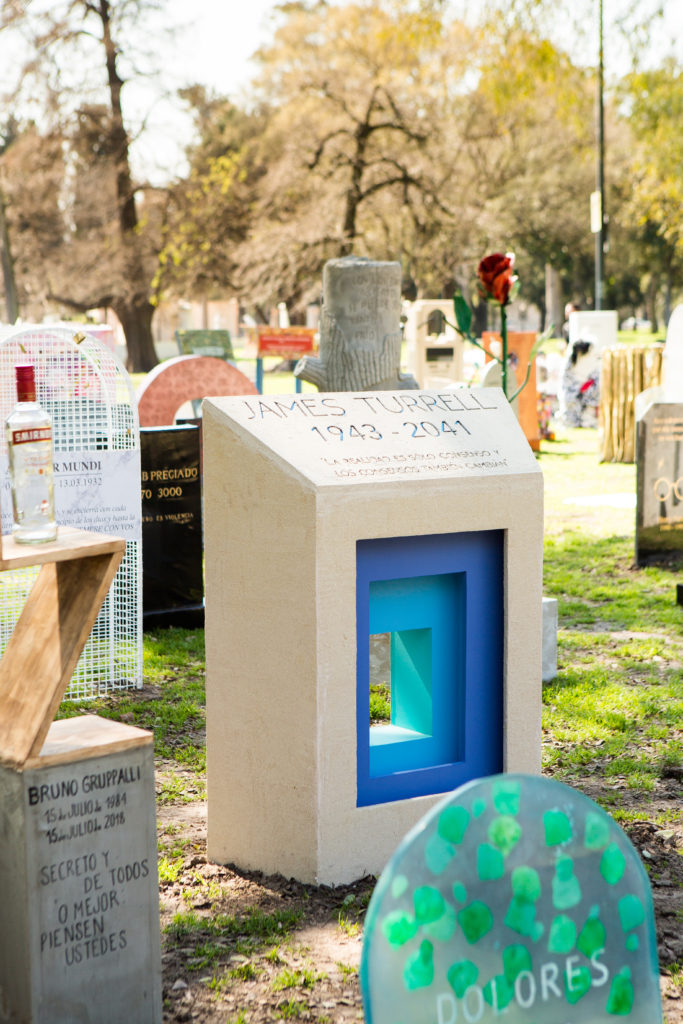
Maurizio Cattelan’s Eternity (2018) in Plaza Sicilia. Photo courtesy of Art Basel.
Alemani overdelivered, presenting an illuminating view of the country’s up-and-coming artists and the issues that animate them. She accomplished this, in true Art Basel Cities fashion, by asking the locals: before doing studio visits last November, she had veteran local artists like Diego Bianchi and Guillermo Kuitca recommend some names. “It’s a much less structured art world here,” Alemani says. “It’s a small community, but they very much support each other.” Galleries were not involved in funding the show, which was paid for through city and private money.
The result is an exhibition featuring a teetering, M.C. Escher-like circular staircase made out of scaffolding components by the Mercedes-born Luciana Lamothe, who Alemani calls “one of the most important artists working in Argentina right now”; a sculptural portrait in the depressed Boca neighborhood that Gabriel Chaile, an artist from San Miguel de Tucumán, dedicated to a victim of a “happy trigger” police shooting, and which doubles as an empanada oven to be used for community meetings by local activists opposing police violence; and a series of bright new paintings that the rising-star Buenos Aires artist Ad Minoliti says aim “to reinterpret geometric abstraction from a feminist queer point of view,” and which she made in collaboration with her mother.
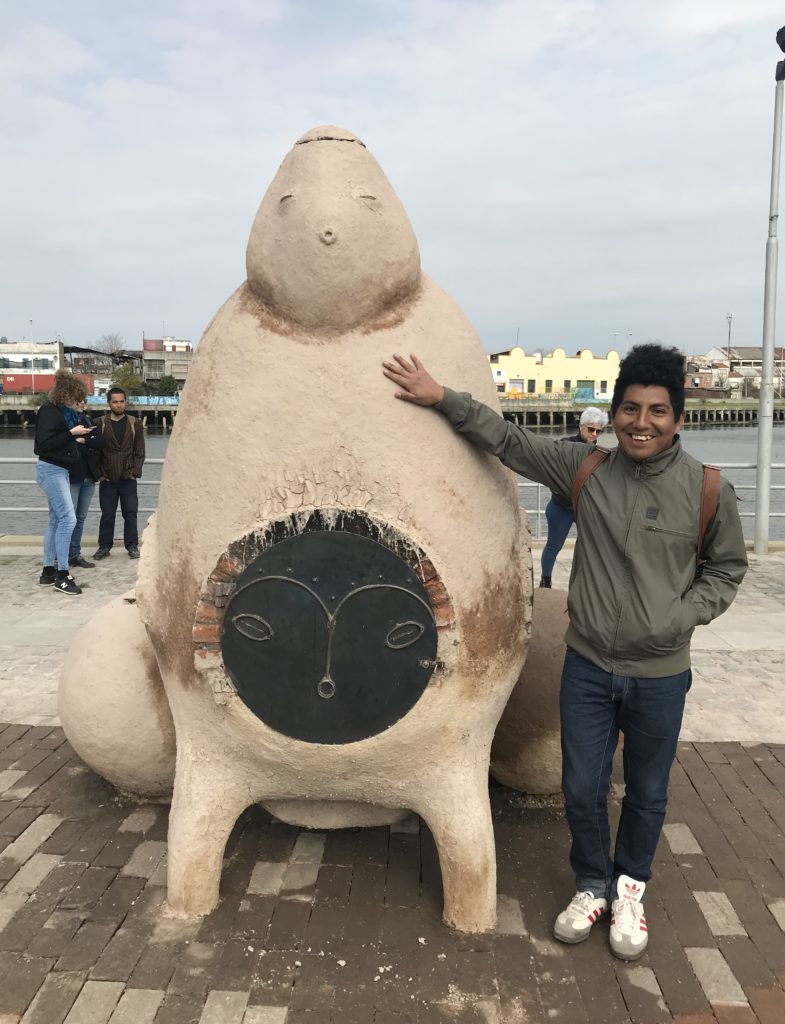
The artist Gabriel Chaile with his sculpture Diego (Portrait of Diego Nuñez) (2018). Photo by Andrew Goldstein.
The most prominent work in the show, however, is not by an Argentinian, but by American artist Barbara Kruger, who painted the entire façade of a 210-foot-wide grain silo with the words “You Can’t Live Without Us Women” and “Who Owns What.” Facing Calatrava’s 2001 “Woman’s Bridge” and located in the Puerto Madero neighborhood, where the streets are named after women, the painting directly enters the heated discussion over women’s reproductive rights in Argentina, where a recent vote to legalize abortion failed to pass, prompting demonstrations by women sporting the now-ubiquitous green handkerchiefs that are the emblem of the cause. “Argentina is taking it to the street every day,” Alemani says. The artwork, one of two in the show that will remain on view for a year (the other being a suite of paving tiles by Leandro Katz), was an immediate sensation on Instagram.
Describing Art Basel Cities as “a hybrid form between a biennial a festival a gallery weekend without being any of these things,” Alemani says that her role also entailed teaching the city and its artists best practices for public art: “How do you commission a public artwork? What does the contract look like? Who owns the work? Who maintains it when it crumbles?” While her show has now concluded its brief run, she is optimistic that the government or other private sponsors might step in to hold a sequel.
Perhaps the hardest part of Alemani’s job has been explaining what her job is, exactly. “What I’ve been hearing a lot is that people don’t fully understand what Art Basel Cities is,” she says. “It’s been hard for us to communicate, so I’ve just said, ‘Wait until September and you’ll see. It’s money and funding that goes back to the art scene here.’”
Because of the experimental nature of Art Basel Cities, where programming is parceled out over time (and the 2019 component remains to be announced), confusion among locals is understandable. Add that uncertainty to the awkward timing of the economic crisis, which has people worrying about basic services, and some question the value of the city’s investment in what can look like a shoot-the-moon art scheme—even some of the artists themselves.
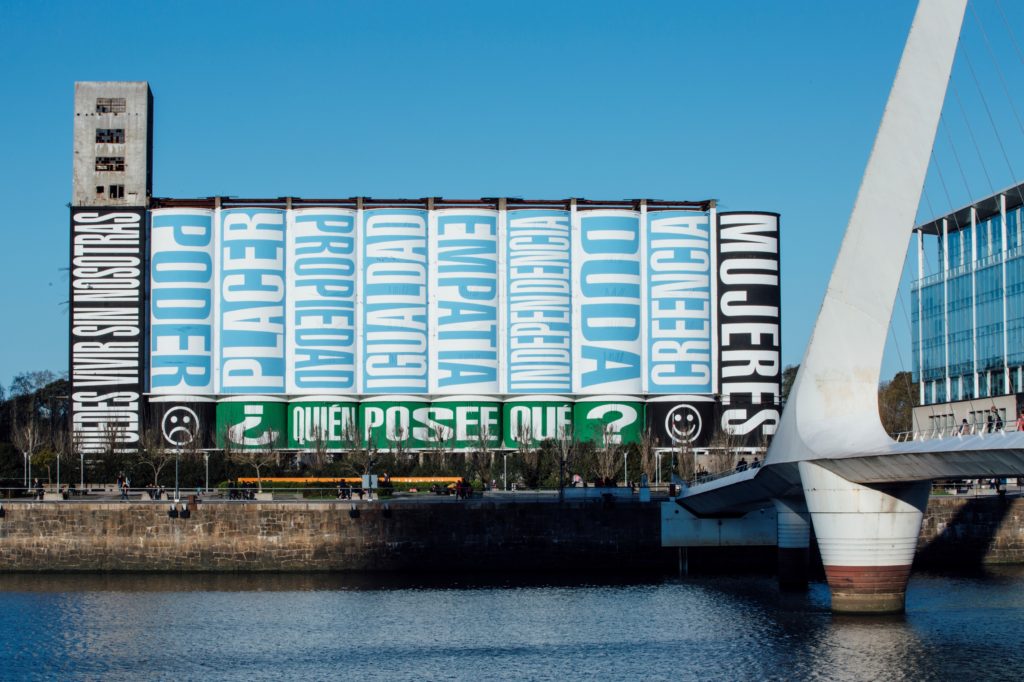
Barbara Kruger’s Untitled (No Puedes Vivir Sin Nosotras You Can’t Live Without Us), 2018. Courtesy the artist and Art Basel
“I don’t know if it was a good decision, given the crisis now,” says artist and curator Santiago Villanueva. “All the artists are discussing this, that it’s not the moment to have this when there are lots of problems in the museums. It’s deeply problematic.” He adds, “At the same time, it’s useful to have all these people here to see our shows.”
Another artist, Mariela Scafati, who is featured in Alemani’s exhibition, suggests that people might experience cognitive dissonance encountering the show at the same time that headlines are reporting dramatic cutbacks, like 600 Ministry of Agriculture workers being laid off. “In the middle of all of this, the relationship between the government and this project is mysterious,” she says. “For the artists it’s good, I suppose. For us, it’s work.”
In the context of the economic crisis, which has tripled the country’s unemployment rate amid 27 percent cuts in capital spending, jobs may be Art Basel Cities’s most salient impact. “Part of the budget is put toward local production, creating jobs locally,” Foret says. He estimates Art Basel and the government have hired between 15 and 20 people each. According to the mayor’s office, the city expects Art Basel Cities to “generate more than 1,000 direct jobs” in total.
Others involved with the project are more optimistic. Anibal Jozami, a prominent local collector who presides over the city’s Universidad Nacional de Tres de Febrero and who also serves on the Art Basel Cities board, says that access to art is vital in letting disenfranchised Argentinians rise up the social ladder in a country rife with inequality, where it’s said that six men control 60 percent of the country’s wealth. “Argentina has the most economic difference of any country in the world,” he says. “Art can surpass borders, and help people surpass the boundaries of social difference.”
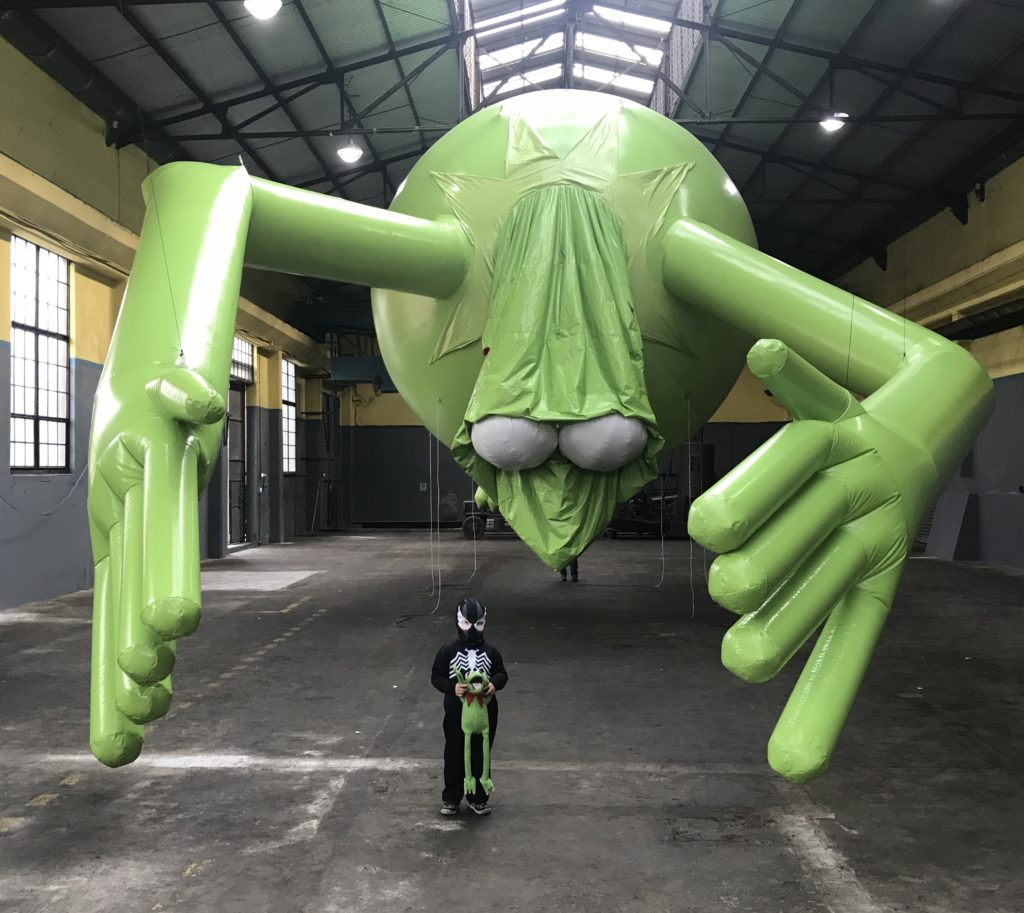
A young fan visits Alex Da Corte’s Kermit the Frog, Even (2018) in Cecilia Alemani’s show. Photo by Andrew Goldstein.
Leopol Jose Maria Mones Cazon, the co-founder of the city’s Galería Isla Flotante and the vice president of Meridiano, an association of 44 galleries across Argentina, has a more businesslike hope for Art Basel Cities: that it will create more commerce for local galleries. “It’s very romantic to talk about art,” he says, “but it’s very important for us that the business of art feeds the entire system, and that’s about money. We believe Art Basel Cities can be a strong foundation to build the future development of the art scene.”
Isla Flotante has already benefited directly from its association with Art Basel, making it into the coveted Positions sector at the Miami Beach fair this December. And since Art Basel asked Meridiano to select one art professional to give its members a seminar, the group chose Ana Castella from CONDO, the gallery-share organization. There are now talks to potentially have a CONDO partnership in Buenos Aires.
Enrique Avogadro, the Buenos Aires culture minister, says he has no regrets about embarking on the Art Basel Cities partnership despite the financial climate. “You cannot run these programs by yesterday’s newspaper, and Argentina is a very resilient country, so we are confident that this crisis will order itself in the future,” he says. “That’s why we are investing in our future by pursuing these kinds of projects.” He adds there are no plans to cancel any of the city’s art programming.
While the metrics for this month’s debut Art Basel Cities Week are still being tallied, there are already some concrete signs that positive developments are emerging. Last November, after Art Basel brought a delegation of VIPs to the city (with Buenos Aires paying for their accommodations), Palais de Tokyo director Jean de Loisy began planning a show of work by an Argentine artist he encountered there. And artists in Alemani’s show are already seeing new opportunities: Mariela Scafati has been shortlisted for the BMW Art Journey and a local social services organization called Casasan has agreed to show (and use) Gabriel Chaile’s empanada-oven sculpture permanently.
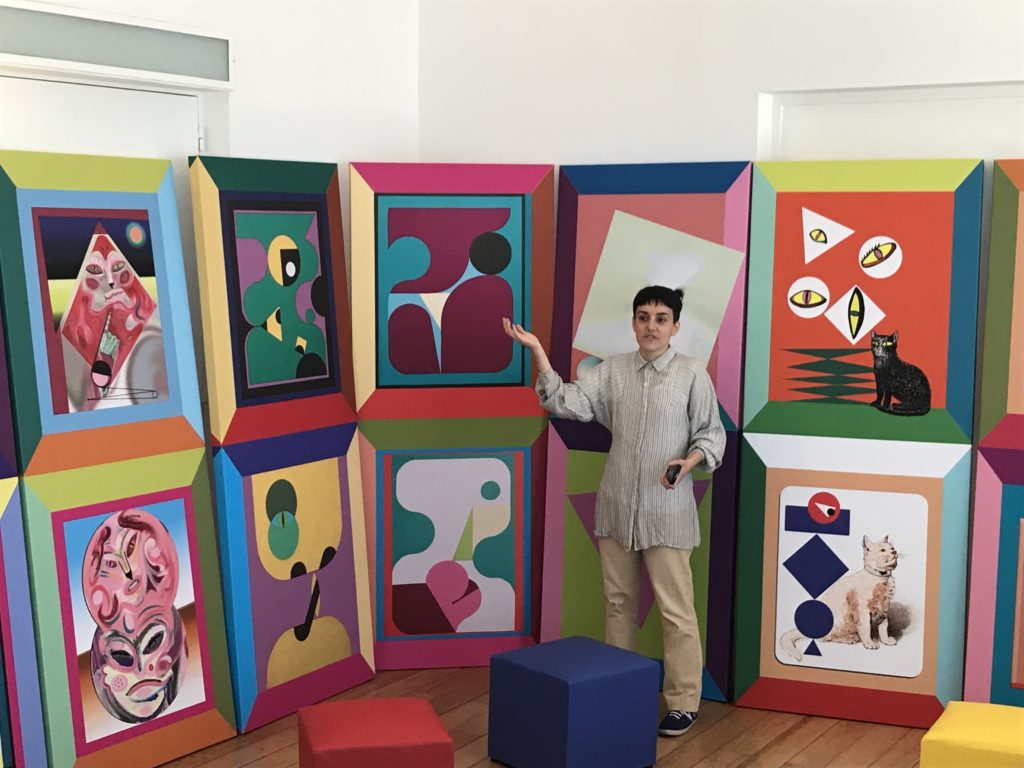
The artist Adriana Minolitti with her new suite of paintings at the Casa Victoria Ocampo Ad Minoliti, which provide the backdrop for her “Symposium for Expanded Painting and Speculative Fiction.” Photo by Andrew Goldstein.
But there’s no rush to show evidence of success, according to Foret. “The beauty with the government of Buenos Aires is that they really see this partnership as a long-term process,” he says.
As for Victoria Noorthoorn, who recently opened an expansion to her museum, she is working to adjust to a new reality where her annual budget doesn’t go nearly as far as it once did. “We are looking again at the exhibitions that are about to open and are evaluating if we need so many walls, if we need so many frames,” she says. “Yes, it is a tragedy that we are where we are today, but it is in moments of crisis there have always been artists creating great works, so it is a time to listen and give a platform for the alternatives that the artists propose.”